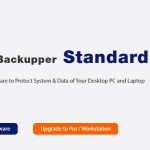When a data breach or outage occurs, your business’s information must be accessible as soon as possible, or else every aspect of the organization will suffer. However, studies and numerous researches show that the median time between an outage and recovery is increasing, from 3 hours in 2010 to 8 hours in 2021.
MultCloud and other cloud backup systems solutions provide a unique answer to this problem. In this MultCloud review, we’ll look at some of the service’s flaws and limits, as well as the company’s claims to being the finest cloud storage manager.
What is MultCloud?
According to the business website, MultCloud focuses on transferring across clouds thus, transfers and manages your multiple cloud files with one app. The good news about this is that the services are free at least for now. But are they?
From the layman’s point of view, MultCloud is a free tool that connects all of your cloud storage and allows you to move or sync data easily from one cloud provider to another. With upload, download, cut, copy, paste, transfer, and delete, you may manage online data from various clouds under one virtual roof. Change the name, etc.
Benefits of Mult Cloud
Performance
Because performance is typically inversely associated with the number of network hops between servers, organizations may reduce latency and other performance metrics like jitter and packet loss by picking a cloud provider with data centers that are geographically close to their clients. The best option for businesses with a wide range of cloud-based workloads is likely to combine numerous cloud providers. A feature you can always be guaranteed from MultiCloud.
Compliance
Customer data will frequently be kept in certain locations as a result of data governance rules, such as the EU’s GDPR. Unless companies are ready to build and manage their own on-premises data lakes, a multi-cloud solution will be required — again, depending on the geographical distribution and workload mix of the company.
Resilience
All cloud providers, including hyper-scale ones with many geographically distributed, redundant data centers, have outages from time to time, thus placing all your workload’s eggs in one provider’s ‘basket’ runs the risk of a mission-critical application going down. A multi-cloud approach may cause difficulties in terms of deployment and management but it should also improve security, failover, and disaster recovery, in other words, resilience.

Outage data and cloud to cloud backup is available from AWS, Microsoft Azure, and Google Cloud Platform, but reporting variations make comparisons difficult. Analyst Zeus Kerravala recently did some digging and discovered that, from January 2018 to May 2019, AWS and GCP experienced similar levels of IaaS downtime (respectively, 338 and 361 hours)while Azure was in a diverse league with 1,934 hours — more than 5 times the outage rate for AWS and GCP.
Vendor lock-in
The desire to avoid getting trapped into a single cloud provider’s infrastructure, add-on services, and pricing model is one of the most commonly stated reasons for multi-cloud adoption. Although cloud-native apps built on containers and microservices can be designed to be transferable between clouds, providers will often strive to make their platforms “sticky” with particular features, services and functions that set them apart from their competitors.
This implies that a portable ‘lowest common denominator’ application may not fully leverage a cloud provider’s capabilities and that organizations will have to weigh the benefits of portability vs full capability (and potential lock-in) for certain workloads. A multicloud approach is expected to emerge as a result of combining multiple workloads.
Cost Estimation and Reporting
While employing many providers might save you money, estimating expenses and consolidating them becomes increasingly difficult. Because each cloud provider charges differently for each service, you’ll need a thorough understanding of each cloud’s price structure. This also implies that in order to successfully manage all financial elements, you’ll require cross-account reporting dashboards and optimization tools. Aside from that, transferring data across clouds may result in additional costs.
Rapid Innovation
The ability to swiftly develop and innovate at speed is a fundamental feature of the multi-cloud strategy. You may focus on innovation and select how your company evolves since you are not limited by the restrictions of a single cloud provider. Although all cloud providers aim to deliver the whole range of tools you want, a multi-cloud strategy allows you to select the finest sets of services from each provider and integrate them into your app.















